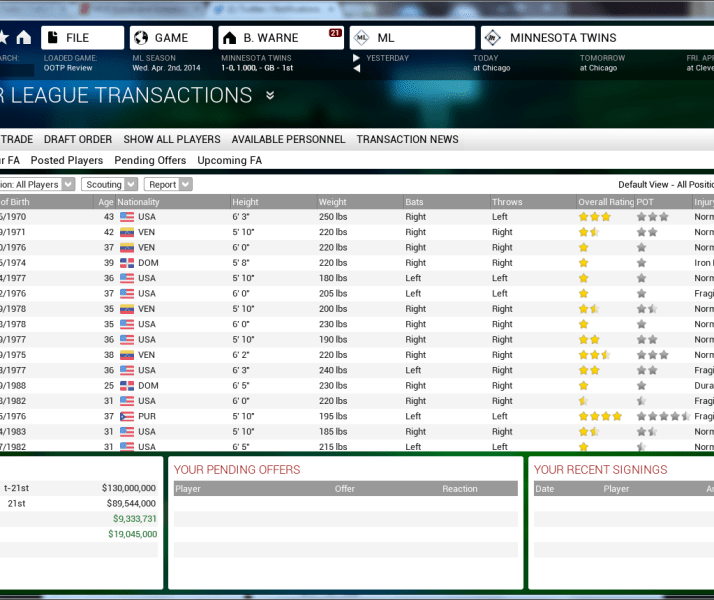
When you click the menus across the top of the screen, you'll also notice that they've been simplified and streamlined, so it's much easier to find what you need. As you can see in the screenshots above, that results in a cleaner look with more room for stats and other information.
Ootp baseball 15 mac os#
(Okay, 155-7.)Īnd that aforementioned free agent with a 60/100 power rating? Now you'll know he's a little better than average in that category.Ĭlick here to Pre-Order OOTP 15 for PC Windows and Mac OS XĬlick here to Pre-Order OOTP 15 for Linuxįor 14 years, OOTP was designed for displays with 4:3 aspect ratios by default, but now we've stepped into the widescreen world and made those 16:9 or 16:10 resolutions the default when creating a new game. For fun, look at all your players' ratings relative to an A-ball league and pretend your team will go 162-0 this year. If you want to see a player's ratings relative to another league, simply click the dropdown in the upper right corner of his profile page, rather than go back to Game Settings. Notice how his current Contact, Gap Power, and Eye/Discipline ratings dropped a bit from before, which means he actually has room to improve in those areas, relative to the rest of the league. For example, let's look at Phillies slugger Ryan Howard before enabling this setting: When you do so, you'll notice ratings change for players all over your league. (This option was added to the standard League Creation Wizard too.) The dropdown lets you select which league you want it relative to. Now you can turn on a new optional rating system that crunches average player ratings for all positions at the beginning of the season and displays player ratings relative to those averages. Was he a guy with moderate power who might slug 20-25 home runs a year? Was he a player with a little more pop in his bat who could be counted on for over 30 dingers per season? Or was he a brute who was going to annually pound 40 or more balls over the fence? Since there was no way to see how many players were above or below 60/100 (besides manually counting them), you couldn't gauge where the player in question fell in the spectrum of power ratings in your league. The truth is, past versions of the game have featured player ratings based on hidden internal ratings, so if you were looking at a free agent with a 60/100 power rating, you couldn't tell if that was above or below league average. Ratings are the spark plugs that make a simulation engine run, but how OOTP produces them for each player has always been a bit of a mystery for most armchair GMs.

Today's installment of the 2014 Road to Release for Out of the Park Baseball 15 focuses on three new features: A new way to look at player ratings, a new look for the interface, and a revamp of the historical league creation wizard. Revamping Ratings, the Interface, and Historical League Creation


 0 kommentar(er)
0 kommentar(er)
